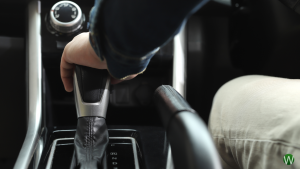Learner Drivers In The UK Spent Almost £1.7bn Learning To Drive Between 2018 And 2019
Data from the DVSA (Driver and Vehicle Standards Agency) shows that learner drivers spent almost £1.7 billion on learning to drive between 2018 and 2019. Closer analysis of this data shows some interesting trends about the cost of learning to drive, the success rates of different groups, and the time that it takes for people to pass their driving test.
The key results of this data show:
- Between 2018 and 2019, learner drivers spent £1,679,602,087.12 on their driving education.
- The average person spends £1,222.47 on driving lessons before taking their test. They also spend £23 for a theory test and £64 for their practical test, on average.
- Between April 2018 and March 2019, 1.2 million people successfully completed their driving theory test.
But how do those figures apply to different groups, and who is most likely to pass their driving test?
The data shows that it is students aged 17 and 18 (GenZ) that are most likely to pass their driving test first time. They have a 50% pass rate on their first test, which is higher than any other age group. However, when you look at the overall figures for all age groups, both males and females are statistically most likely to pass on their fourth or fifth attempt at the test. Pass rates are 54% and 56%, respectively.
The split between male and female pass rates is very interesting as well. When it comes to the practical test, males are more likely to pass than females. They have a pass rate of 49.7%, compared with just 46% for females. However, the trends go in the opposite direction when it comes to the theory test. 49.1% of females pass first time, but only 45.6% of males do.
Most people tend to assume that people will pass the theory test and then take their practical shortly afterwards, but the statistics show that people do not necessarily pass the theory test and the practical test in the same year. Between April 2018 and March 2019, 1,266,796 students passed the theory test. However, only 761,791 passed their practical test in the same year. That means that only around 60% of people that pass their theory test will also pass the practical test in the same year.
In some cases, that may be because people have taken the theory test at the end of the year and did not get around to taking the practical before the year was over. However, it could also suggest that a lot of people have difficulty with the practical test and end up failing a few times before passing. This is backed up by earlier statistics that show people are most likely to pass on their fourth or fifth attempt. The cost of learning to drive will also be increased by this trend because people will have to go back to their driving instructors and have more lessons.
These success rates mean that students spend, on average, 47 hours taking driving lessons before they are able to pass their test. The average cost of those lessons is £26.01, although this will vary depending on location. Learners also need to pay an average of £23 for a theory test and £62 for their practical test. That means that a learner that passes first time will spend an average of £1307.47 (that is £1222.47 on lessons and £85 on tests). When multiplied by the number of people that learned to drive between 2018 and 2019, this gives a figure of just below £1.7 billion.
This may seem like a lot of money to spend, but when you compare the cost of learning to drive with other life skills, it is actually very affordable. For example, if you want to learn a musical instrument, you can expect to pay somewhere between £40 and £60 per lesson, and it takes, on average, 10 to 15 years to become an expert.
The same can be said for things like martial arts or sports. If you want to learn self-defence, it will cost you £25 to £30 per lesson and you will need to invest around 7 years in the skill.
Overall, the cost of driving is relatively low when compared to other life skills. It’s also a far more useful and essential life skill than things like learning an instrument because most people need to drive to get to and from work and to do simple tasks like shopping etc. So, even though the figures show that a lot of money is spent on driving lessons, it’s actually a very worthwhile and cost-effective investment for young people.





